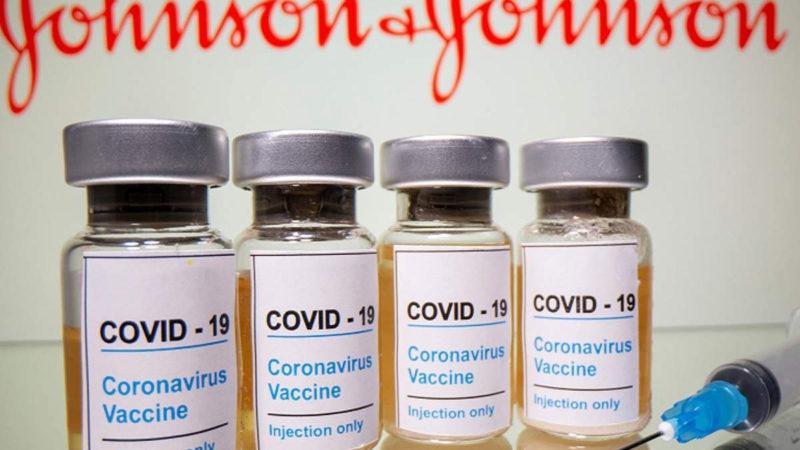Birth Control

Sexually active women may wish to become pregnant or they may want to avoid this possibility. Pregnancy is always possible, when:
- a woman is between puberty and menopause
- a woman has sexual intercourse with a male partner
- both the man and the woman are fertile
Fortunately there are many birth control options and more are being developed all the time. Choose the method that best meets your needs and lifestyle.
Birth control methods may be permanent or they may be reversible allowing a woman to choose to have children later in life. Emergency methods of birth control are also available, which may prevent pregnancy if used within 100 hours (three to five days) of unprotected intercourse.
Permanent Birth Control Methods:
Permanent methods of birth control involve creating a surgical block or an occlusion to prevent a woman’s egg from coming in contact with a man’s sperm. Although they may be reversed in some cases, they are usually called permanent because reversal is difficult and cannot be guaranteed. These procedures do not protect against sexually transmitted infections, but a successful surgery is a 99.5 per cent effective way of preventing pregnancy. Generally, couples who choose these methods are in stable partnerships and can predict that they do not wish to have children in the future. Approximately 24 per cent of Canadian women rely on one of these procedures to avoid pregnancy.
There are three possible procedures:
1.Vasectomy:
Vasectomy is a very simple surgical procedure that makes a man infertile. It can be done in about 15 minutes in a doctor’s office. About 14 per cent of Canadian women rely on this form of birth control. A successful vasectomy is 99.5 per cent effective in preventing pregnancy (if the woman has only one sexual partner!)
How it’s done?
The scrotum is numbed with an injection but the man remains awake during the procedure. Two tiny incisions are made. The tubes (called vas deferens) which carry sperm from the testicles to the penis are severed and the ends are sealed.
Afterwards:
Most men recover quickly although a few men experience pain and swelling for up to two weeks. Infection is possible but rare. Men are asked to avoid strenuous activity for 48 hours. It takes about three months for the procedure to be fully effective. A sperm count is done three months after the procedure to ensure that it has been successful.
A vasectomy has no negative effects on a man’s sex drive and studies have not shown an association with prostate cancer. Very rarely, small, sometimes painful, bumps can develop at the ends of the vas deferens. These bumps usually disappear on their own, but may be removed surgically if necessary.
Advantages:
- one-time procedure
- very effective
- quick recovery
- no need to remember birth control method
- allows male partner to be involved in birth control decision-making
- you don’t have to interrupt sex
- no significant long-term side effects
- simplest procedure for permanent birth control
Disadvantages:
- male partner must be willing
- reversal is expensive, difficult and sometimes impossible
- provides no protection against sexually transmitted infections
- psychologically difficult for some men
- birth control must be reconsidered if a woman changes (or adds) male partners
2. Tubal ligation:
Tubal ligation is a surgical procedure that makes a woman infertile. It is performed in a hospital. About 10 percent of Canadian women rely on this method of birth control. There are two ways of doing the surgery.
1-Abdominal incision:
Usually performed under general anesthetic. An incision is made just above the woman’s pubic region. The fallopian tubes, which carry the eggs from the ovaries to the uterus, are cut and sealed.
2- Laparoscopy:
Usually performed under general anesthetic. Laparoscopy only requires two tiny incisions that can be covered with Band-Aids. A thin tube carrying a camera is inserted through one incision. An instrument is placed through the second incision and used to block the fallopian tubes.
Afterwards:
A woman can move around after about eight hours and resume normal activities in a few days. Physical exertion should be avoided for at least a week. Infections or bleeding are possible but rare. An anesthetic that makes a woman unconscious has more risk than a local anesthetic.
This is a simple and effective procedure. The failure rate is very low (less than 0.1 per cent) but if a tubal ligation is unsuccessful, it can increase the risk of a woman having an ectopic pregnancy. This is a dangerous condition where a fetus begins to develop in the fallopian tube instead of inside the uterus.
Some studies suggest that a woman who has a tubal ligation before age 30 has a slightly higher risk of hysterectomy in later life. Other studies suggest that this procedure has a slight protective effect against ovarian cancer and pelvic inflammatory disease (PID).
Advantages:
- one-time procedure
- very effective
- no need to remember birth control method
- you don’t have to interrupt sex
Disadvantages:
- reversal is expensive, difficult and sometimes impossible
- provides no protection against sexually transmitted infections
- although a tubal ligation dramatically decreases the risk of any pregnancy, if the procedure fails and a pregnancy results, there is an increased risk of it being an ectopic pregnancy
Hysteroscopic tubal occlusion (Essure):
Essure is a permanent birth control procedure. It is an alternative to traditional tubal ligation. Essure is over 99 per cent effective at preventing pregnancy. Using a scope inserted into the uterus through the cervix, small Essure coils are placed into the fallopian tubes (the tubes that carry eggs from the ovaries to the uterus). The body then builds tissue around these coils over the next few months, blocking the fallopian tubes. The Essure insert is made of materials that include a nickel-titanium alloy. The procedure requires no incisions, and does not require a general anesthetic. Another method of birth control must be used for about three months (but possibly six months) following the procedure, while the body forms enough tissue around the inserts to block the fallopian tubes.
Afterwards:
Hysteroscopic tubal occlusion is a quick and simple procedure, and many women can return to their regular activities the same day. Side-effects from the procedure can include mild to moderate pain and/or cramping, bleeding or spotting, and nausea.
An X-ray or an ultrasound is performed about three months after the procedure to make sure that enough tissue has formed around the inserts to block the fallopian tubes. Until then, another form of birth control must be used.
Advantages:
- one-time procedure
- very effective
- no need to remember birth control method
- no surgical incisions
- no general anesthesia required
- you don’t have to interrupt sex
Disadvantages:
- cannot be reversed
- takes several months to become effective
- provides no protection against sexually transmitted infections
- patients who are allergic to nickel may have an allergic reaction to the inserts
- although tubal occlusion dramatically decreases the risk of any pregnancy, if the procedure fails and a pregnancy results, there is an increased risk of it being an ectopic pregnancy
- in rare cases, women have experienced pelvic pain, infection, or the coils causing a puncture in the uterus or fallopian tube
Reversible Birth Control Methods:
A woman’s childbearing goals change throughout her life cycle. A woman may wish to avoid pregnancy, although she may want to have children at other points in her life. Fortunately there are many methods of birth control that protect a woman from pregnancy while still preserving the option to have children at another time.
Three possible strategies are used to prevent pregnancy for women who may want children later.
Hormonal methods:
These methods change a woman’s hormone levels preventing the ovaries from releasing an egg. Hormonal methods include:
Non-hormonal methods:
These methods often involve physical or chemical barriers that prevent a man’s sperm from coming in contact with a woman’s egg. Non-hormonal methods include:
- condoms (male and female)
- cervical barriers
- IUDs
- spermicides
- sponge
- withdrawal
Fertility Awareness methods:
Fertility awareness methods rely on tracking your body’s fertile times and avoiding sexual intercourse at these times.
Emergency contraception
If a couple forgets to use their birth control method, or their method fails, emergency contraception can be used. Emergency contraception should not be used as an ongoing birth control strategy.
Emergency methods:
Emergency contraception can be used to prevent pregnancy after unprotected intercourse or the failure of another birth control method.
Emergency contraceptive pills (morning after pills) can be used up to 120 hours (three to five days) after unprotected sex, but the earlier they are used the better.
A post-coital IUD can also be inserted to prevent pregnancy. This can be done up to seven days after unprotected sex.
Neither of these methods helps protect you against sexually transmitted infections.
Emergency contraceptive pills (ECP):
Emergency contraceptive pills may contain estrogen and progestin, or progestin alone. These are the same hormonal drugs contained in some birth control pills but at a different dose. When used for emergency contraception, these hormones interfere with ovulation to prevent a pregnancy. They may also change the lining of the uterus so a fertilized egg cannot implant. These pills are not perfect, but they cut the risk of pregnancy by 75 to 85 per cent.
Emergency contraception pills (ECP) are now available from pharmacists over the counter, without a doctor’s prescription, across Canada.
ECP is very safe. There is no evidence that these drugs cause harm to a pregnancy if they fail. You should not take the pills if you think you are already pregnant; they will not end a pregnancy that is already established.
Using the pills:
Emergency contraceptive pills should be taken as soon as possible after unprotected intercourse.
If you have purchased the medication in advance, check the expiry date to make sure the pills are still good. ECP will not prevent a pregnancy from sex that happens after you take the pills, or that occurred more than 120 hours before.
ECP can make you throw up or feel nauseous. If you throw up within one hour of taking your dose of ECP, contact your pharmacy about getting another dose. To reduce nausea:
- try to eat something before taking the pills
- take a Gravol or other over-the-counter anti-nausea drug
- take the pills with milk not water
If your nausea is severe, your doctor may be able to prescribe a stronger anti-nausea drug.
Other possible side effects of ECP include:
- spotting
- cramping
- fatigue
- breast tenderness
Your next period will likely be on time, but it may be early or late. If you don’t have your period within three weeks of taking the ECP, visit your doctor or a pharmacy to have a pregnancy test done.
Emergency contraceptive pills are an emergency method used to cut the risk of pregnancy at one point in time. They should not be used as an ongoing method of birth control, but are effective as a back-up to other methods such as barriers or fertility awareness methods.
Post-coital IUD:
A post-coital IUD is also a very effective way of preventing pregnancy after unprotected sex. It is the same as a regular IUD and can be used up to seven days after intercourse. A post-coital IUD should not be used if a woman is also at risk of developing a sexually transmitted illness due to unprotected intercourse. Inserting an IUD when a woman has an infection can have serious complications.
Image Source:*Instagram
Source:womenshealthmatters.ca






